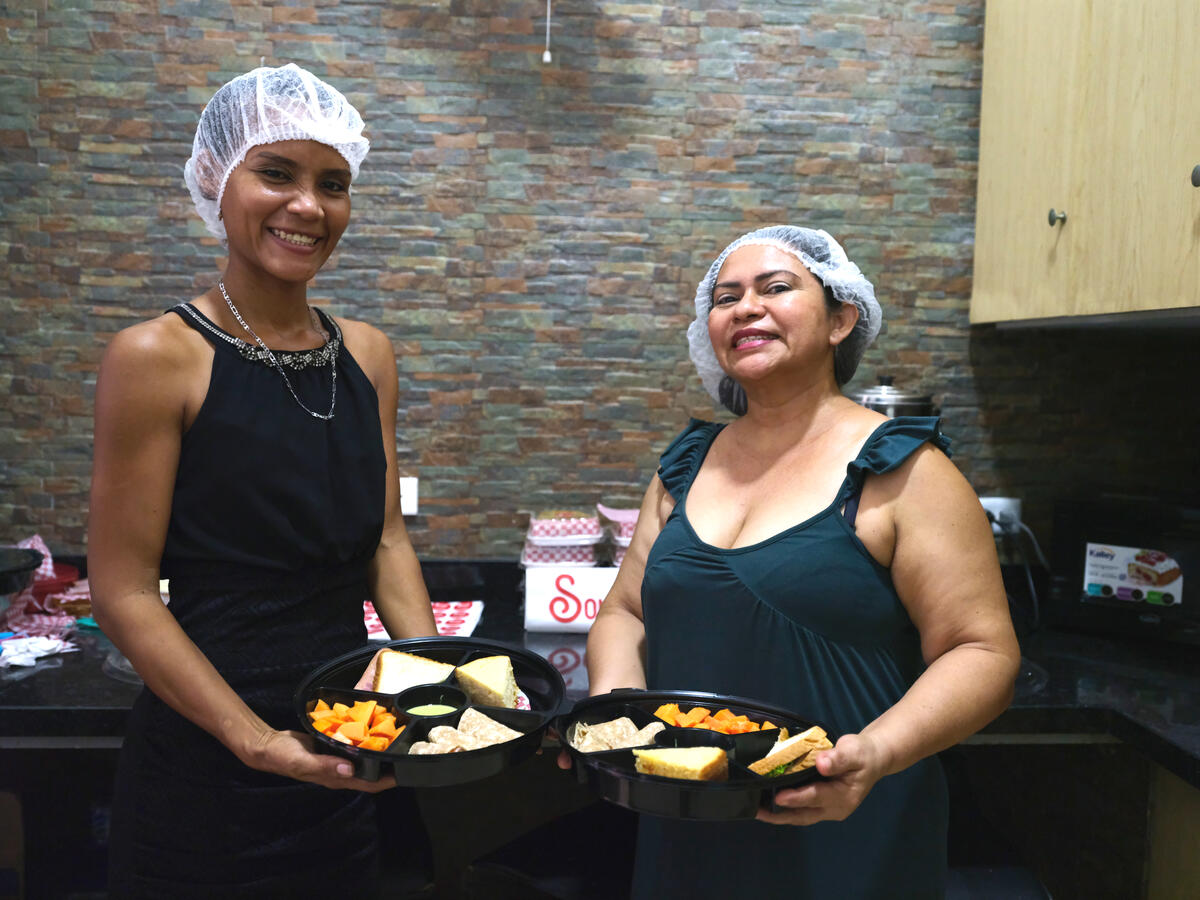
September 18 marked International Equal Pay Day, and it reminds us of women’s years-long fight for equal rights. These efforts have led to public policies with a gender perspective that have allowed more women to be included and participate more fully in politics and the workplace. However, despite some advances, the Global Gender Gap Report 2024 reveals that it will still take 134 years to reach full global gender parity at the current pace.
While gender gaps affect women worldwide, refugee women encounter a unique set of challenges that compound these inequalities. In many host countries, legal frameworks either do not allow refugees to participate in formal labour markets or only permit restricted access. These hurdles, along with additional challenges like child-rearing—which disproportionately falls on women—and the lack of social networks in the host country, severely limit refugee women’s formal labour inclusion and economic empowerment.
The global economic cost of excluding refugee women from formal employment is substantial. The Unlocking Refugee Women’s Potential (2019) report suggests that addressing employment and wage gaps for refugee women could boost global GDP by $1.4 trillion annually.
Several other studies reveal the significant economic marginalization refugee women face:
- The Scaling Economic Opportunities for Refugee Women (2020) report highlights labour market barriers for refugee women in countries like Germany, Niger, and Kenya.
- Research by Yuliya Kosyakova (2023) emphasizes that the labour market gap between refugee men and women in Germany widens over time, with refugee women facing lower educational attainment, childcare burdens, and fewer social networks.
- The Labor Market Integration of Syrian Refugees in Turkey (2023) reveals that refugee women are overrepresented in the informal labour market and face significant employment disparities compared to national women.
The studies highlight the obstacles female refugees must overcome to participate in the host labour market, underscoring the need for inclusive policies to unlock their economic potential. Without formal access to employment, their financial independence and resilience remain severely limited. When all women, including refugee women, can work and earn fairly, they can help lift their families out of poverty and contribute to the stability of their communities.
Countries hosting the most refugees face significant gender gaps
Globally, 49% of refugees are women, with 27% being working-age between 18 and 59 years old (UNHCR, December 2023). The top five refugee hosting countries—Colombia, Germany, Iran, Pakistan, and Türkiye—host 39% of all refugees worldwide, and include a substantial number of women refugees.
Gender inequality is entrenched in the latter three countries, according to the Global Gender Gap Report. The report measures the gender gap across 146 economies using the Global Gender Gap Index (GGGI), which ranges from 0 (imparity) to 1 (parity), with lower scores indicating greater progress in closing the gender gap. The GGGI benchmarks progress towards gender parity across four dimensions: economic opportunities, education, health and political leadership. Among the top refugee-hosting countries, Iran and Pakistan are among the bottom ten, according to the GGGI (143rd and 145th, respectively), while Türkiye is in the 127th position, Colombia ranks 45th, and Germany ranks 7th. The following figure compares these rankings alongside the number of female refugees in each country (Figure 1).
Figure 1. Top refugee-hosting countries ranked by gender gap in the Global Gender Gap Report and number of refugee women they host

Top refugee-hosting countries rank between 70th and 120th out of 146 in gender wage equality
The Global Gender Gap Report also measures wage equality between men and women for similar work, with a higher ranking indicating poorer performance. Analyzing the top five host-refugee countries in this index, Germany ranks best (76), followed by Pakistan (81), Türkiye (96), Colombia (105) and Iran (114). Figure 2 below depicts how these countries rank and the size of their female refugee populations. On this indicator of gender wage equality, all five top-hosting countries do not make it to the top 50% of performers.
Figure 2. Top refugee-hosting countries ranked by wage equality for similar work in the Global Gender Gap Report and the number of refugee women they host

Figures 1 and 2 above highlight the gender disparities of host nations in where millions of refugee women reside. In nations that limit women’s participation in public life, their access to leadership roles and opportunities in education, employment, and civil engagement is restricted, which minimizes their potential contributions to society.
Multiple studies highlight the significant economic barriers refugee women face, including restricted access to formal labour markets, childcare responsibilities, lower educational attainment, and limited social networks. These challenges are likely compounded for refugee women living in countries where national women already contend with deeply rooted gender inequalities.
As a result, refugee and other marginalized women are disproportionately pushed into informal employment. Evidence suggests that while living in countries with gender disparities, refugee women usually earn less than host women. Indeed, the Scaling Economic Opportunities for Refugee Women (2020) indicates a pay gap between refugee women and host women ranging from roughly 94 cents for every dollar earned in Türkiye to approximately 29 cents for every dollar earned in the United States.
Addressing these disparities requires policies that target the specific challenges faced by all women in host countries. Integrating a gender perspective into refugee strategies—by improving access to childcare, education, and formal job opportunities—can foster greater economic inclusion.
Closing the pay gap for all women, including refugees, is more than a fairness issue; it is an economic imperative that strengthens economic resilience and drives broader economic development.
Sustainable Development Goal 8.5: “Achieve full and productive employment and decent work for all women and men, including for young people and persons with disabilities, and equal pay for work of equal value”.
